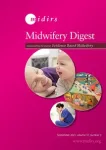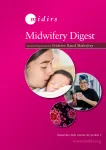|
Résumé :
|
Historically, perineal protection and comfort were key priorities for but the medicalisation of birth transformed perineum into a site for routine surgical intervention (Dahlen et al 2011). It has been many years since the British midwife Jennifer Sleep first questioned the routine use of episiotomy in childbirth (Sleep et al 1984), yet episiotomy remains the most commonly performed surgical procedure worldwide (Silf et al 2015). Soberingly, the extent of true informed consent for this procedure remains questionable. Data show that the rates of episiotomy vary between countries, from 13.4 per cent in Australia to 97.4 per cent in Lebanon (Kaddoura et al 2019). Previous studies have also shown that the rate of episiotomy has been decreasing in some parts of the world, for example in the United States of America (USA), Canada and France, over the last decades (Graham et al 2005). In Italy, the incidence of episiotomy is approximately 68 per cent in primiparous women (Grandolfo et al 2002), however there is no systematic method of data collection regarding episiotomy and perineal tears. Moreover, with the steady increase in migration flows into Italy it is difficult to evaluate ethnic and demographic risk factors. The rate of episiotomy is used as an indicator of risk assessment and the recommended rate of episiotomy advocated is 10 per cent (World Health Organization (WHO) 1996). Higher episiotomy rates have been associated with anal sphincter tears (Räisänen et al 2010, Kalis et al 2011). An appropriate rate of episiotomy is an indication of good quality assistance and an analysis of the incidence of severe perineal tears (SPT) is an important statistic about the health of women in childbirth. The aim of this study is to analyse the execution of episiotomy and the analysis of the risk factors for episiotomy and SPT in the population. The incidence of SPT has been investigated in a retrospective analysis.
|









